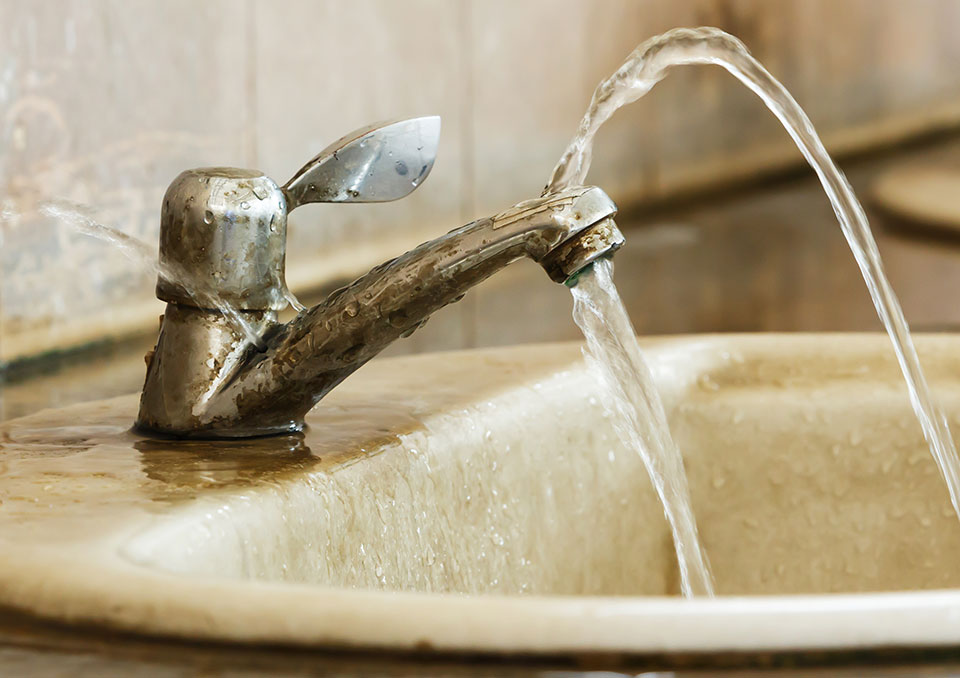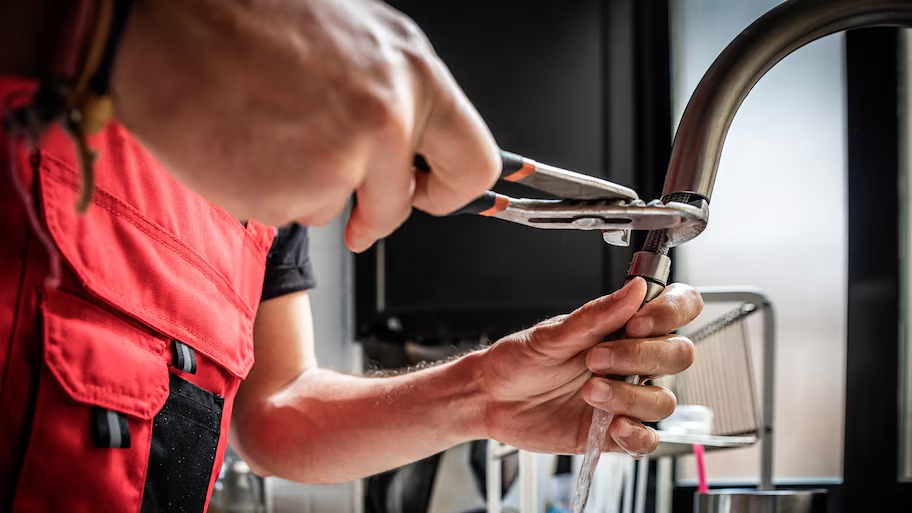Understanding the Significance of Resolving a Broken Faucet
Understanding the Significance of Resolving a Broken Faucet
Blog Article
What're your thoughts about How to Fix a Dripping or Leaky Faucet ?

Dripping taps could appear like a minor hassle, yet their impact exceeds simply the annoyance of the noise. From drainage to sustaining unnecessary monetary expenses and health risks, overlooking a trickling faucet can cause different repercussions. In this short article, we'll explore why it's vital to resolve this usual home issue quickly and successfully.
Waste of Water
Environmental Influence
Leaking taps add considerably to water waste. According to the Epa (EPA), a single tap leaking at one drip per secondly can waste more than 3,000 gallons of water each year. This not just strains water resources however additionally influences communities and wildlife depending on them.
Financial Prices
Increased Water Bills
Beyond the environmental impact, dripping faucets can inflate water bills substantially. The gathered wastefulness with time converts right into higher utility expenses, which can have been stayed clear of with prompt repair services.
Prospective Building Damage
In addition, extended dripping can lead to harm to fixtures and surface areas surrounding the tap. Water build-up can cause discoloration, corrosion, and also architectural issues if left neglected, causing extra repair work prices.
Health Concerns
Mold and Mildew Growth
The constant presence of wetness from a leaking faucet creates a perfect environment for mold and mold development. These fungis not only compromise interior air top quality however likewise pose health and wellness risks, particularly for people with breathing conditions or allergic reactions.
Waterborne Illness
Stagnant water in trickling faucets can become a breeding place for germs and various other virus, boosting the risk of waterborne illness. Contaminants such as Legionella microorganisms thrive in stationary water, potentially causing severe diseases when consumed or inhaled.
Do it yourself vs. Professional Repair service
Benefits and drawbacks of Do It Yourself Repair Service
While some may try to fix a trickling faucet themselves, DIY fixings feature their own collection of obstacles. Without appropriate understanding and devices, do it yourself attempts can intensify the problem or cause insufficient fixings, prolonging the problem.
Benefits of Hiring a Professional Plumber
Hiring a professional plumber guarantees that the underlying reason for the dripping faucet is addressed effectively. Plumbers have the expertise and tools to diagnose and fix faucet issues successfully, conserving time and reducing the risk of more damage.
Step-by-Step Overview to Taking Care Of a Dripping Faucet
Devices Needed
Prior to attempting to fix a dripping tap, gather the needed tools, consisting of an adjustable wrench, screwdrivers, substitute components (such as washers or cartridges), and plumber's tape.
Usual Faucet Issues and Their Solutions
Determine the type of faucet and the particular concern causing the drip. Typical troubles include worn-out washing machines, rusty valve seats, or defective O-rings. Describe supplier instructions or on the internet tutorials for detailed advice on repairs.
Safety nets
Normal Upkeep Tips
To prevent dripping faucets, carry out routine maintenance such as cleaning up aerators, checking for leakages, and changing damaged components immediately. In addition, take into consideration mounting water-saving tools or updating to a lot more effective fixtures.
Value of Prompt Fixes
Resolving leaking faucets as soon as they're noticed prevents more water wastefulness and prospective damage, inevitably saving both water and money in the future.
Effect On Building Value
Perception of Well-Maintained Building
Preserving a residential property in good condition, consisting of addressing upkeep issues like dripping taps, improves its viewed value and desirability among potential buyers or occupants.
Influence on Resale Value
Properties with well-maintained plumbing components, including faucets, command greater resale worths in the real estate market. Dealing with leaking taps can add to a favorable impression during home examinations and arrangements.
Ecological Duty
Specific Payment to Preservation
Taking duty for taking care of leaking taps lines up with wider efforts toward water preservation and ecological sustainability. Every person's actions jointly make a considerable impact on preserving priceless sources.
Sustainable Living Practices
By focusing on punctual repair work and adopting water-saving behaviors, people contribute to lasting living methods that benefit both existing and future generations.
Final thought
Dealing with a trickling faucet surpasses simple convenience; it's a necessary step towards conserving water, minimizing financial expenses, and safeguarding health and wellness and property. Whether via DIY repair services or specialist assistance, acting to deal with dripping faucets is a little yet impactful means to promote responsible stewardship of resources and contribute to a much healthier, extra lasting future.
How to Fix a Dripping or Leaky Faucet
A leaking faucet is one of the most common problems that homeowners encounter, but it being commonplace doesn’t make it any less annoying. The constant drip drip drip of a leaking bathtub faucet, showerhead, or sink tap can disturb your home’s serenity. Left neglected, a dripping faucet can also result in higher water bills and discoloration or mold growth in your sink or plumbing fixtures.
Fortunately, you don’t have to be a trained plumber to know how to stop a dripping faucet. With some basic tools, replacement parts, and a little patience, leaky faucet repair is a breeze. In this article, we’ll explain what causes dripping faucets and how you can fix them.
What Causes a Leaking Faucet?
Kitchen and bathroom faucets come in all manner of designs, but most involve some combination of valves, O-rings, seals, and washers. The O-ring is usually the weakest link, but any one of these pieces can wear down over time. Heat, moisture, temperature fluctuations, minerals, mold, and movement can contribute to warping and corrosion, breaking the watertight seal. This just comes with the territory of being a homeowner. Everything is always subject to wear and tear, and some component parts of your appliances and fixtures need to be replaced on occasion. At least replacement O-rings are cheap!
More rarely, dripping faucets can be a symptom of excessively high water pressure. Were this the case in your home, you would probably notice that the leak is not isolated to one faucet. Water pressure issues are harder to resolve on your own. We recommend contacting a professional plumber if you suspect your water pressure is too high.
How to Fix a Dripping Faucet
Pipe wrench or monkey wrench Allen wrench set Screwdrivers Old towel or rag Shut off the water.
Before you do anything, you need to turn off the water to keep from drenching your kitchen or bathroom. You should find a valve under the sink and against the wall. Once you’ve turned this valve, try turning the faucet on to confirm that the water source has been cut off.
If you can’t locate your local valve for the faucet you’re working on, you can always shut off the water to the house at the main valve. Of course, this will prohibit anyone from using the sinks, showers, or toilets while you’re working on the faucet that’s giving you trouble.
Plug or block the drain.
You’ll be disassembling the faucet and removing some small bits of hardware. Plug the drain with a stopper or rag to avoid the possibility of a small screw falling into your P-trap.
Take apart the faucet assembly.
There are several varieties of kitchen and bathroom faucets, each with its own manner of assembly. For detailed instructions on how to disassemble your faucet, you can refer to the fixture’s manual or contact the manufacturer. If you know whether you have a ball, disc, cartridge, or compression faucet, you can find detailed schematics online.
In general, you need to begin by removing the faucet handles. You might notice a small screw that you’ll need to remove with a screwdriver or Allen wrench. If you don’t see any visible securing hardware, it’s likely hidden under a decorative cap that can be unscrewed or popped off with flathead screwdriver.
Remove each piece methodically, consulting a schematic when necessary. Take notes or arrange the pieces in such a way to make it easier to correctly reassemble the faucet later.
Remove the cartridge.
Once you’ve removed the handles and securing hardware, you should be able to remove the valve cartridge or stem. Some cartridges will slide right out. Other faucet models will require you to loosen a nut with a pipe wrench before you can remove the valve stem.
Examine the exposed hardware.
With the cartridge or stem removed, inspect the component parts. Check the rubber O-rings for wear and tear. Also examine the seat washer for corrosion or other damage. These pieces are usually the responsible parties for a dripping faucet, but it’s worth inspecting the other component parts while you have the faucet disassembled.
Find replacement parts.
Once you’ve identified which faucet component has failed, find an identical replacement. Your local hardware store should have O-rings, seat washers, and other standard components in stock. If you have a luxury or uncommon faucet, you may have to contact the manufacturer for a replacement part.
It’s a good idea to take your old parts with you to the hardware store so you can compare them with the store’s inventory and be sure you’re purchasing the correct replacement.
Reassemble the faucet.
With your new parts in hand, reconstruct the faucet and handles. Don’t be tempted to overtighten screws or nuts. You might think this could create a better seal, but it can instead damage or bend a delicate part of the assembly and create a new problem for you.
Turn on the water and test the faucet.
The only thing left to do is test your work. Unplug the sink, turn the water back on, and try the faucet. Congratulate yourself on a job well done!
https://www.libertyhomeguard.com/how-to-fix-a-dripping-or-leaky-faucet/

I was made aware of that write-up about Water Dripping from Faucet: Why and How to Fix from a good friend on a different website. If you liked our post kindly be sure to pass it around. Kudos for being here. Don't hesitate to come visit our website back soon.
Report this page